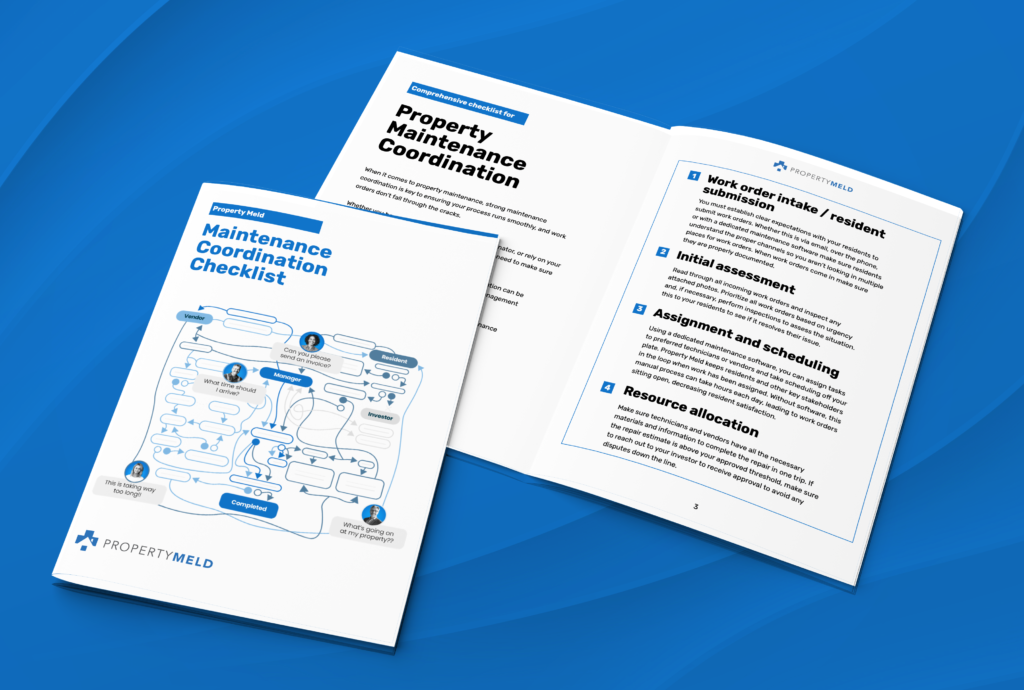Are you knee-deep in maintenance coordination checklists this time of year, manually juggling work orders, and crossing your fingers that communication between residents and vendors goes smoothly? It’s a scenario many property managers find themselves in, but it doesn’t have to be the norm. Enter our comprehensive property maintenance coordination checklist, designed to revolutionize the way you handle maintenance requests and ensure nothing falls through the cracks.
Download our property maintenance coordination checklist:

Let’s break down the steps involved in this checklist:
- Work Order Submission and Documentation: Start by defining clear expectations or accepting work orders, such as through email, phone, or maintenance software. Document all pertinent details, assigning each request a unique ID for easy tracking.
- Initial Assessment: Prioritize incoming work orders based on urgency and perform site inspections as necessary to assess the situation directly.
- Planning and Scheduling: Using maintenance software, assign tasks to preferred technicians or contractors and set realistic timelines for completion, keeping all stakeholders in the loop.
- Resource Allocation: Secure necessary materials and budgetary considerations are addressed upfront to prevent future delays.
- Execution and Monitoring: Keep a close eye on the progress of each work order, communicating updates to the resident as needed to manage expectations.
- Quality Control: Upon completion of work, send out resident surveys to confirm satisfaction.
- Documentation and Record Keeping: Maintain detailed records of all completed work orders and associated documentation for future reference.
- Feedback and Follow-Up: Solicit feedback from requesters to continuously improve service quality and address any outstanding issues promptly.
- Review and Analysis: Regularly analyze work order data to identify trends and areas for improvement, generating reports for management review.
- Continuous Improvement: Invest in ongoing training for maintenance staff and regularly evaluate and refine your processes to optimize efficiency and service delivery.
Following this checklist ensures a structured and efficient approach to property maintenance coordination, ultimately leading to timely and satisfactory resolution of work orders.
However, it’s important to note that managing maintenance for a sizable portfolio involves handling a significant volume of work orders each month. For instance, a property management company overseeing 500 units might expect to deal with at least 200 work orders monthly.
The sheer volume can be overwhelming, which is why it’s crucial to leverage technology and streamline your processes wherever possible. Property management software can centralize work order management, automate communication, and provide valuable insights into maintenance trends, helping you stay ahead of the curve and deliver exceptional service to your residents.
In conclusion, while the traditional maintenance process may have sufficed in the past, there’s always room for improvement. By embracing dedicated property maintenance coordination software and adopting a proactive approach to maintenance management, you can elevate your property management game and ensure the satisfaction of both residents and stakeholders alike.




